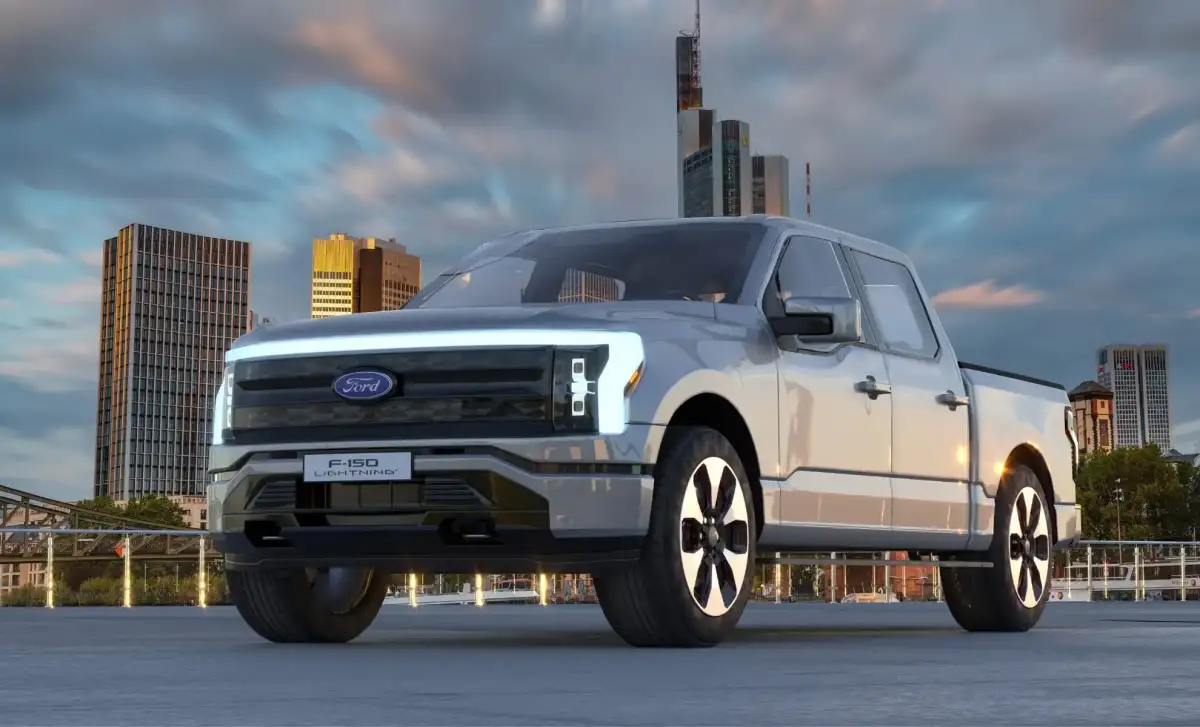- From Growth to Slowdown: How the End of Incentives Shifted Lightning’s Trajectory
- Massive Losses Push Ford to Redraw Its Electric Roadmap
- Supply Chain Breakdown: Aluminum Shortage Brings Lightning to a Halt
- Balancing Caution and Ambition: Ford Rebuilds Its Strategy Around Hybrid Powertrains
- Impact on the Kingdom: Will Pickup Options Be Affected?
The FordUAE FordKSA FordBahrain FordEgypt FordKuwait FordOman FordQatar Ford F-150 Lightning rose to prominence as the first true electric pickup from an American automotive giant with decades of truck building heritage. It combined the character of the iconic F-150 with modern EV technology, turning it into a headline grabber across North America and beyond. Yet in recent months, warning signs have emerged, starting with production cuts and escalating into a temporary shutdown, amid reports suggesting the entire project may face cancellation. Behind this decision lies a complex mix of shifting demand, profitability pressures, supply chain challenges, and Ford’s evolving vision for its electric vehicle strategy, pushing the company to reassess one of its most important product segments.
From Growth to Slowdown: How the End of Incentives Shifted Lightning’s Trajectory

Ford launched the project with strong confidence that an electric pickup would gain the same market acceptance as its traditional models, especially in the U.S, a market that favors large trucks more than any other. And while the Lightning posted respectable sales in 2023 and 2024, those numbers remained a small fraction of the much larger gasoline powered F-150 lineup.
Demand began to decline amid major market shifts, most notably rising interest rates and increased living costs, both of which pushed the final price of the electric model beyond the comfort zone of many buyers. When a key federal tax credit expired in late 2025, demand for full size EVs dropped sharply. U.S. EV sales in October alone fell by nearly a quarter, directly affecting Lightning sales.
For a buyer in Saudi Arabia considering an import, the situation underscores a key reality: the Lightning was born in a market heavily supported by government incentives. Once those incentives disappeared, sales dropped, making it necessary for Ford to rethink the project’s future.
Massive Losses Push Ford to Redraw Its Electric Roadmap

Despite strong media attention, Ford’s Model e division, responsible for the company’s fully electric vehicles, failed to generate profit, recording losses in the billions. This financial pressure pushed management to reevaluate high cost projects with weak returns, placing the F-150 Lightning at the top of the list.
The company responded by cutting production to nearly half its previous capacity, reducing weekly output from around 3,200 units to roughly 1,600. Some employees were reassigned to more profitable models such as the Bronco and Ranger, while the next generation electric pickup was delayed to 2027 instead of the originally planned mid decade launch.

Key factors influencing production:
Shrinking demand for full size electric vehicles in the U.S. market.
Higher production costs compared to gasoline and diesel F-150 models.
Significant operating losses within Ford’s electric vehicle division.
Reduced production plans and workforce shifts toward more profitable traditional models.
Delayed launch of the next generation electric truck to beyond 2027.
Supply Chain Breakdown: Aluminum Shortage Brings Lightning to a Halt

Ford faced an unexpected setback after a major fire broke out at the Novelis plant in the United States, one of its most critical suppliers of aluminum used in both traditional F-150 bodies and, even more importantly, the electric Lightning. Since the Lightning relies heavily on aluminum to reduce weight, the incident forced Ford to temporarily halt production at the Dearborn plant.
According to U.S. reports, the impact of the aluminum crisis may extend until late 2026, with potential losses reaching up to $1 billion due to production stoppages and the need to source alternative materials at higher costs. Under these conditions, Ford prioritized its gasoline and diesel powered F-150 models, which enjoy stronger demand and higher profit margins.
Impact of the crisis on F-150 production:
Temporary shutdown of Lightning production at the Dearborn plant.
Crisis expected to continue through 2026 due to limited aluminum supply.
Increased raw material costs affecting overall project profitability.
Priority shift toward higher volume, higher margin gasoline and diesel models.
Balancing Caution and Ambition: Ford Rebuilds Its Strategy Around Hybrid Powertrains

Facing mounting challenges, Ford began reshaping its long term strategy. The company officially canceled its planned large electric SUV and postponed several upcoming EV programs, shifting its focus to expanding hybrid production and reducing investment in large scale electric projects.
Ford also plans to increase production of its gasoline and diesel powered F-150 and Super Duty trucks by more than 50,000 units in 2026, aiming to offset Lightning related losses and bridge the gap caused by the aluminum supply disruption. This approach aligns closely with the reality of the GCC markets, where charging infrastructure is still developing and driving conditions often demand long distances, durability, and strong towing capability, making traditional or hybrid pickups a more practical choice for now.
Impact on the Kingdom: Will Pickup Options Be Affected?

The temporary halt of the Lightning does not indicate that Ford is abandoning electric vehicles; rather, it reflects a strategic recalibration driven by market conditions and profitability concerns. And since the Lightning was never officially offered in Saudi Arabia, the short term impact remains limited, especially as traditional pickups continue to dominate the market.
The future, however, remains open. Electric vehicles have entered the automotive world but have yet to take over, and Ford is developing its next generation of electric trucks at a more careful pace. Until the sector matures and fast charging infrastructure becomes more widely available, gasoline and hybrid pickups will remain the most practical options on Saudi roads, while fully electric pickups represent a near future possibility rather than an immediate alternative.



